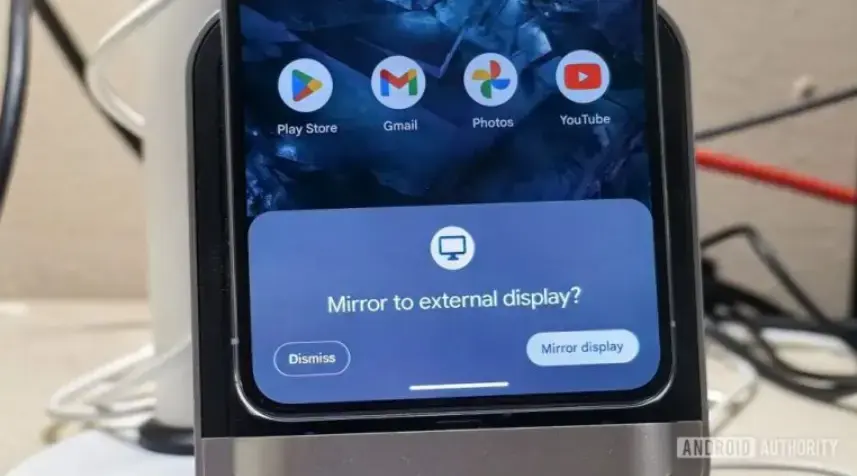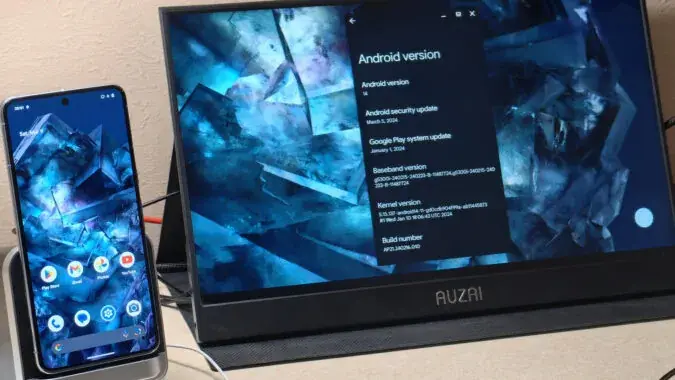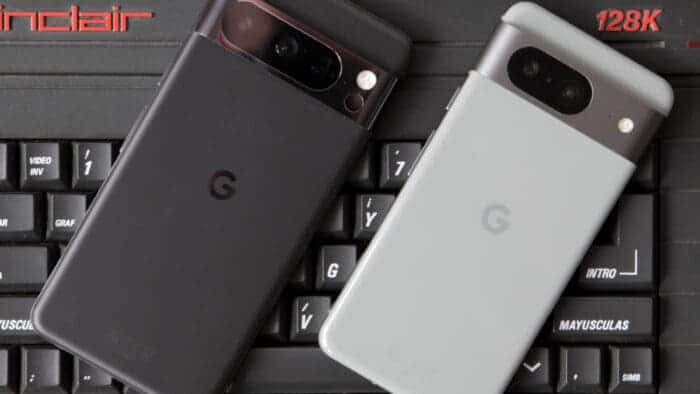Google’s latest flagship phones, the Pixel 8 and Pixel 8 Pro, have made a significant leap by enabling support for wired external displays, a feature that was notably absent in previous Pixel models. This enhancement brings users a more desktop-like experience, akin to Samsung’s DeX mode, allowing for a seamless connection to monitors or TVs using USB-C to HDMI or DisplayPort cables.

Pixel 8 series – the first to support external displays
The Pixel 8/Pro series will become Google’s first mobile phone that can be connected to a wired external display. After updating to the Android 14 QPR3 Beta version system, it can be connected and used without any other operations. Before the launch of Pixel 8/Pro, tipster Kamila Wojciechowska said that the phone supports USB DisplayPort Alt mode, allowing video output through the USB-C interface.
Tech blogger, Mishaal Rahman recently discovered that after installing the Android 14 QPR3 Beta update, users can plug a USB Type-C to USB Type-C or HDMI video cable into the phone. This means that one end of the cable can slot into a compatible monitor. When this happens, the phone will pop up a dialog box, asking if you want to mirror your phone’s screen to an external display. Once you click Connect, everything displayed on your phone will be copied to your monitor or TV.
If you want a more desktop-like experience, you can enable developer settings on your phone and toggle the “Force Desktop Mode” option to get a desktop-like OS experience. Rahman pointed out that the existing desktop mode is very rudimentary , but Google is apparently working on a more powerful version, which is expected to launch with Android 15 this fall and cannot be ruled out as one of the selling points of the Pixel 9 series.
Unfortunately, video output is not available on other Pixel devices. Also, Google has disabled DisplayPort Alt Mode at the hardware level. This means that the Pixel 8 and Pixel 8 Pro are the first phones to offer hardware support.
Evolution of External Display Support
The evolution of external display support on mobile phones has been a significant development in enhancing user experiences and productivity. Historically, support for external displays is manufacturer-dependent, with early Android devices lacking this feature. However, advancements in technology have led to innovations like MobIES, a system that allows users to extend mobile interfaces using external screens.
Recent developments have seen Google’s Pixel 8 series introducing support for wired external displays, a feature that was notably absent in previous Pixel models. This enhancement allows users to connect their devices to monitors or TVs using USB-C to HDMI or DisplayPort cables, providing a more desktop-like experience. While older Pixel phones lacked this support and relied on DisplayLink adapters for screen mirroring capabilities, the Pixel 8 now offers hardware-level support for DisplayPort Alternate Mode, enabling seamless transmission of display output signals to external displays.

Desktop-Like Experience
Users of the Pixel 8 and 8 Pro can now enjoy a more versatile experience by connecting their devices to external monitors or TVs. By activating the Mirror to external display option when linking the phone via USB-C or an adapter, users can project their phone’s screen contents onto a larger display. Additionally, by enabling Force desktop mode under Developer options in the Settings app, users can access a rudimentary desktop-like interface that would undergo further enhancements with Android 15.
User Experiences and Recommendations
Enthusiasts have shared their experiences with utilizing this feature on platforms like GrapheneOS Discussion Forum, highlighting the potential for screen mirroring and screen extension capabilities. While Google has not officially enabled this feature due to ongoing development and potential bugs, users can leverage third-party solutions like GrapheneOS to access this functionality.
Future Prospects
Looking ahead, as Google continues to refine its desktop mode UI and potentially integrates it into Android 15 alongside future Pixel models like the Pixel 9 series, users can anticipate even more seamless integration between their smartphones and external displays. This advancement not only enhances productivity but also bridges the gap between handheld devices and traditional computing setups.
Enthusiasts have shared their experiences with utilizing this feature, highlighting the potential for screen mirroring and screen extension capabilities. Although Google is still refining its desktop mode UI and should to integrate it into Android 15 alongside future Pixel models like the Pixel 9 series, users can already enjoy a rudimentary desktop-like interface by enabling Force desktop mode under Developer options in the Settings app. This advancement not only enhances productivity but also bridges the gap between handheld devices and traditional computing setups.
![]()
Conclusion
The introduction of support for wired external displays in Google’s latest flagship phones, the Pixel 8 and Pixel 8 Pro, marks a significant evolution in smartphone functionality and user experience. This feature enables users to seamlessly connect their devices to monitors or TVs, providing a more desktop-like interface and enhancing productivity.
The Pixel 8 series represents Google’s first foray into hardware-level support for DisplayPort Alternate Mode, allowing for direct video output through USB-C connections. This advancement, coupled with the potential for further refinement in Android 15, promises even greater integration between smartphones and external displays.
Despite the current rudimentary state of the desktop mode UI, users can already benefit from screen mirroring and extension capabilities, paving the way for a future where handheld devices seamlessly transition into traditional computing setups.
As enthusiasts share their experiences and Google continues to innovate, the Pixel 8 series sets a new standard for smartphone versatility and connectivity, bridging the gap between mobile and desktop environments. With ongoing development and potential enhancements on the horizon, the Pixel 8 and Pixel 8 Pro stand as trailblazers in redefining the role of smartphones in our daily lives.





